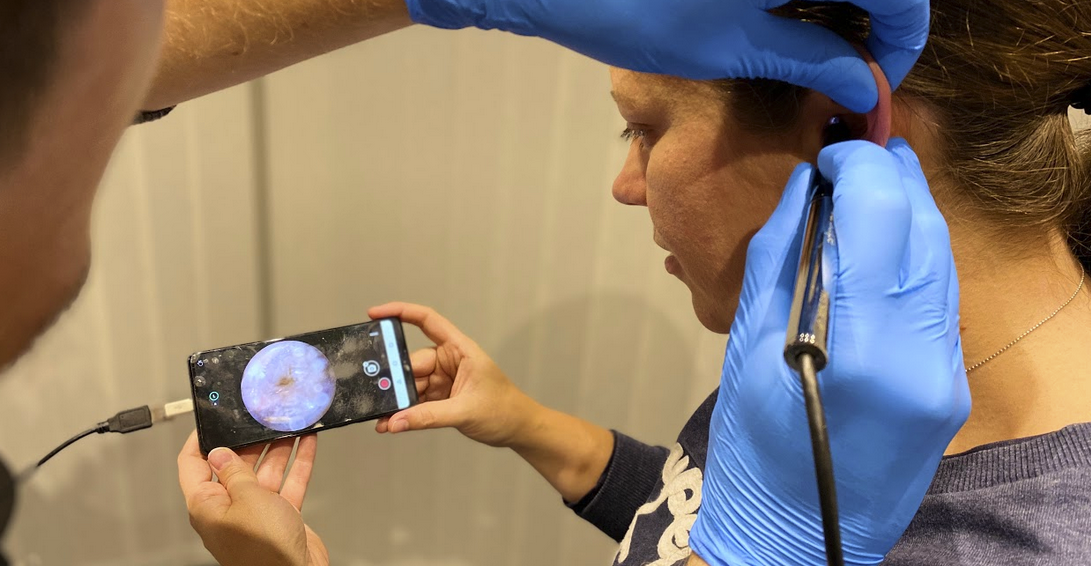Otoconia (Ear Crystals) - A Guide
Have you ever felt dizzy or unsteady when you move your head? Do you sometimes feel like the world is spinning around you? If so, you may have a condition called BPPV, which stands for benign paroxysmal positional vertigo. BPPV is caused by tiny crystals in your inner ear that get dislodged and interfere with your balance. These crystals are called otoconia, and they play an important role in your sense of motion and orientation. In this blog post, we will explain what otoconia are, how they can cause BPPV, and what you can do to treat it. Read on to learn more about Otoconia.
What is Otoconia (otherwise known as Ear Crystals)?
Otoconia, also known as otoliths, ear stones, and ear crystals were first described by the French anatomist Félix Vicq d’Azyr in the late 18th century.
Within the inner ear we have the utricle and the saccule (two otolithic organs) and within this the otolithic membrane which contain tiny calcium carbonate crystals called otoconia. The Otoconia stimulate the hair like cells of these organs to signal to your brain that your body is accelerating, and helping to maintain balance.
What causes Otoconia?
Otoconia is naturally occurring and integral to maintain our balance and orientation. However, when Otoconia become displaced or dislodged from their normal place it can cause complications such as BPPV (Benign Paroxysmal Positional Vertigo).
How do Otoconia become dislodged or displaced?
Sometimes the Ear crystals can break loose and fall out of place into the semi-circular canals of the inner ear.
What are the signs and symptoms of displaced or dislodged Otoconia?
When Ear crystals become dislodged or displaced BPPV can occur. This can make you very sensitive to simple head movements causing episodes of Vertigo – the sensation that the world around you is moving whilst you are still. BPPV is most common in people over the ages of 60 but can affect people of all ages.
Other symptoms include:
Dizziness
Loss of balance & unsteadiness
Sensation that you are spinning (Vertigo)
Nausea and vomiting
Visual disturbance
Nystagmus - repetitive, uncontrolled eye movements
Light-headedness
BPPV does not cause any hearing loss, if you are experiencing any Vertigo with hearing loss this could be down to other issues within the inner ear, such as impacted earwax or blockage. If this is the case, get in touch with Ear View to see how we can help you.
How long can the symptoms of displaced Otoconia last?
If Benign Paroxysmal Positional Vertigo is left untreated symptoms can last from days to weeks (and in extreme cases years). As the episodes of Vertigo are triggered by certain movements of the head this can result in multiple episodes within a day (with each episode lasting from 30 seconds to 2 minutes).
Will the symptoms go away on their own?
Displaced otoconia causing BPPV normally requires intervention from a medical professional to aid the movement of otoconia back to its normal place within the inner ear.
Is having displaced Otoconia a health risk?
As Displaced otoconia causes Vertigo and unsteadiness it can be a risk to your health as the likelihood of falling over is increased.
How is displaced Otoconia diagnosed?
To diagnose displaced otoconia a doctor will check for signs of dizziness, involuntary eye movements, and responses to certain head movements.
What treatments and/or cures work for displaced Otoconia?
The most common and effective treatment for displaced otoconia is particle repositioning manoeuvres carried out by a medical professional. One of the manoeuvres is the Epley Manoeuvre, this involves a professional moving the head into certain positions and maintaining each for 30 seconds (sometimes this can cause transient Vertigo), most people with displaced Otoconia will need multiple treatments over a few weeks to stop symptoms and move the Otoconia back into place.
Summary
Otoconia are small crystals that help your inner ear detect motion and balance. However, they can sometimes move out of their normal position and cause a condition called BPPV. This means that you may feel dizzy, unsteady, or like the world is spinning around you when you move your head. If you suspect displaced Otoconia is causing your symptoms, contact a medical professional for diagnosis and treatment.
It is important to remember that BPPV does not affect your hearing. If you have hearing loss alongside vertigo or a feeling of fullness within the ear you may have another problem such as earwax buildup or blockage.
If you think you have a blocked ear, you should contact Ear View as soon as possible. We offer a safe and painless treatment called micro-suction, which involves gently removing any earwax or debris from your ear canal. Micro-suction is performed by a qualified specialist and can improve your hearing and comfort. Don’t wait any longer, book your appointment with Ear View today.


